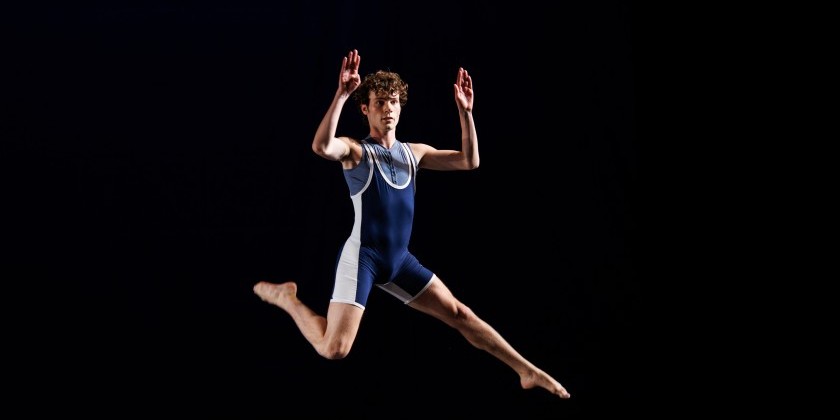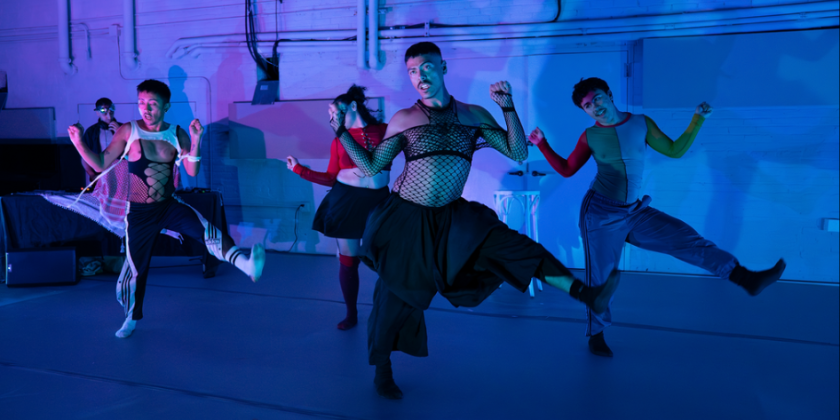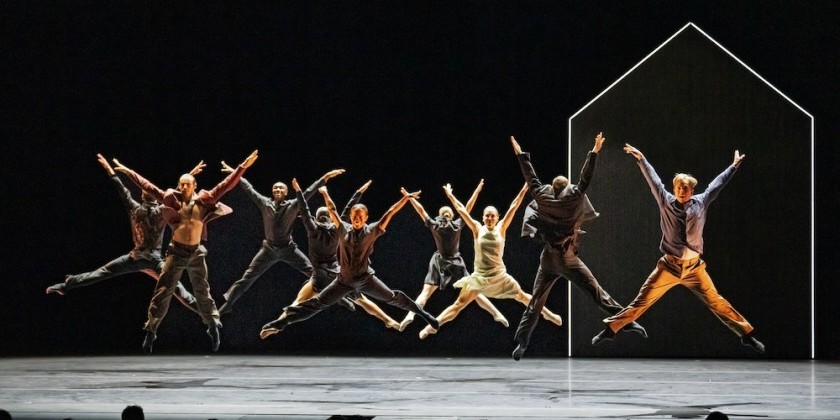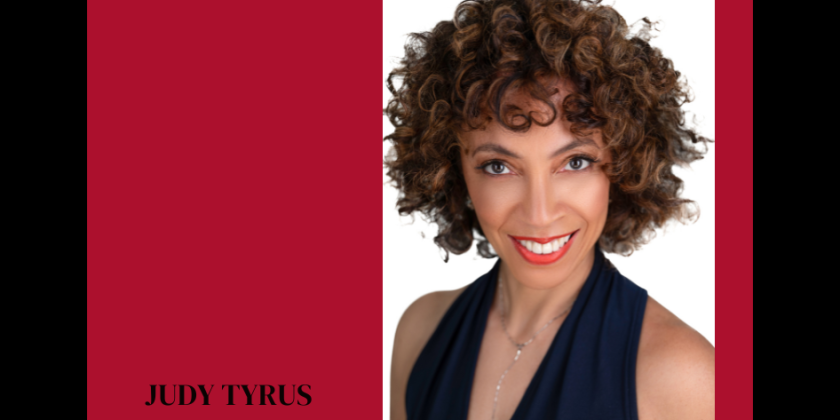Camille Brown Deals with Racism and Stereotypes in her New Ballet
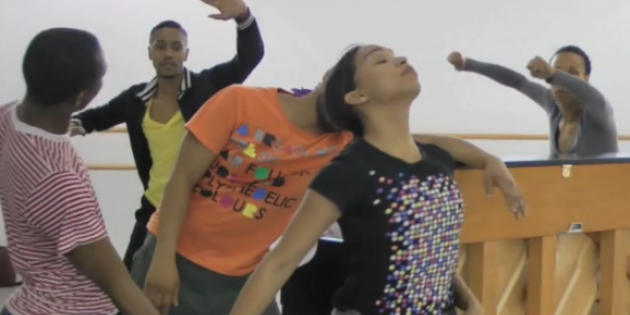
Becoming Visible
Mr. Tol E. RAncE, Camille Brown's Latest Ballet Deals with Racism and Sterotypes (interview with video)
Camille A. Brown will perform a solo excerpt from Mr. Tol E. RAncE in Working Women at The Joyce Theater –January 30th –February 3, 2013. Mr. Tol E Rance will have its New York City Premiere at The Kitchen in April 2013.
Camille Brown: This has been a really long process. This is actually the longest I’ve dedicated to a work and that was because of a grant, a National Dance Project Grant.That allowed me to take the time, which was wonderful.
Christine Jowers, for The Dance Enthusiast: What started your journey?
CB: It started from a more personal feeling, feeling a sense of restriction and questioning whether, as an artist I had to play a game- this invisible game- whether I had to smile when I didn’t feel like smiling, or just put on a mask.
Then I began to research. I had always been fascinated with minstrelsy and decided to dive into that.Also I had been fascinated with Dave Chappelle’s* story from The Chappelle Show. You know, he was offered 50 million dollars and he turned that down. And, people are so critical, they said, “He’s so crazy, why would he turn that down?” But I thought, being an artist myself,“No, no he must have had some really serious struggles.” I started connecting the struggles that I had, to his, and those of other artists who have come before.
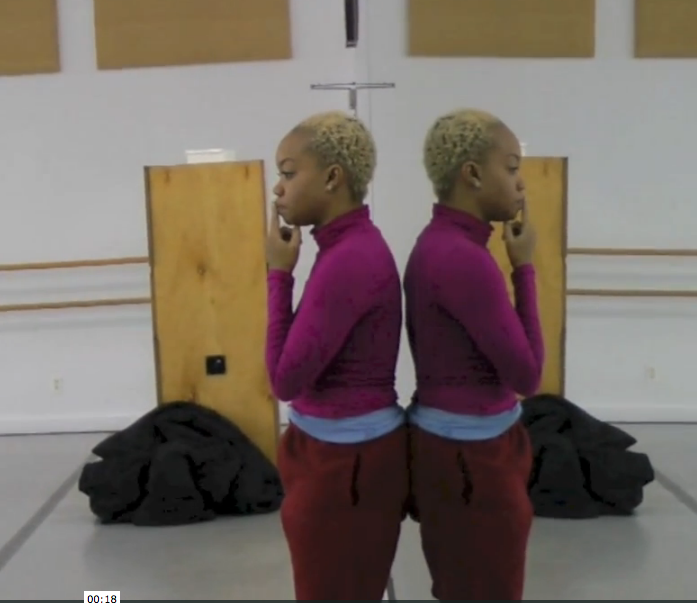 |
| Camille Brown Ponders- in Rehearsal- Photo is a Screen shot from video by Christine Jowers TheDanceEnthusiast |
*TDE’s note: Dave Chappelle left the third season of his hit show The Dave Chapelle Show on Comedy Central to travel to South Africa. He had signed a contract for 50 million dollars to complete his season . In a TIME magazine article he was quoted as saying, “ "What ever decisions I make right now I'm going to have live with. Your soul is priceless." The first two seasons of his show "had a real spirit to them, I want to make sure whatever I do has spirit."
According to an article on QUORA- a research question and answer website, “Chappelle seems to be more concerned about the legitimacy of his work than his 0 million deal. He wanted to make people laugh -- but he didn't want to play out old stereotypes for a cheap joke. It seems that he was concerned that the money and success that Chappelle's Show had earned was pushing him that way.”
TDE: Where you scared to deal with racism and stereotypes?
CB: There’s been question of relevance. Not that I didn’t think this topic was relevant but, maybe people want to push race in the background and say, ”Oh well, Obama’s President, doesn't that mean that race is not an issue any more? Well, no, people are still asking him for his birth certificate, obviously, race is really important. I feel like this piece is important to me because it is what I live through and what I see others living through. I called it Mr. Tol E. RAncE because I wanted to look at what we as black performers had to tolerate, and I wanted to pose the question, “Now, in 2013, what are we tolerating, and are we perpetuating stereotypes?"
A Dance Enthusiast Minute: Behind The Scenes
TDE: In the full length ballet, there is a section, where we recognize familiar characters from almost all black TV shows: J.J., Jimmy Walker’s character, from The Jeffersons, with his famous “Dyn- O- Mite” expression; The Fresh Prince of Bel Air’s opening rap, George Jefferson (Sherman Hemsley’s character), shouting“Weezie “, again from The Jeffersons; and, we hear the music from Amen, one of Sherman Hemsley’s other popular sitcoms. There are also some very negative stereotypes presented. What do you think about those characters, and when you introduce them, what are you trying to say?
CB: Look at Gary Coleman (from Diff’rent Strokes) all he was known for was (the catch phrase) “What you talkin’ about Willis? ” It’s one thing when your known for something and it puts you on the map, that’s wonderful. But it’s another thing when that becomes a restriction. When every time someone approaches you they say, “What’s up Willis, What you talkin’ about Willis?” and that character is the only thing you are seen as.These people are and were actors; they trained to do far more.
In the piece I talk about that. I honor and celebrate these actors because I grew up on their shows. I also wanted to address the pain and struggles some of these people might have had to go through, and the fact that many of the characters were written by white writers. And then, I starting seeing the roles on TV that I didn’t care for, of me, of the black female, over and over again.
A Dance Enthusiast Minute
Who is Mr. Tol E RAncE talking to --mainly African Americans?
CB:It’s talking to everybody; this is a universal theme, even though it’s rooted in the black experience, because I am black. We all have stereotypes. I want to celebrate black history and also shine a light on the pain that people have experienced. I am asking, “Where are we now?” Are we still part of a minstrel show in some aspect? Is someone else holding the strings? Are we? I want people to realize, we’re all in the same house. We all deal with this. We might have different roles, but this is part of American History.
So in Portland, I understand, people where really affected by your work, and ,in fact, the audience got a little “nasty”?
CB:It wasn’t nasty, but it was intense. It depends on where we are and what’s going on in that area that effects the emotions coming up from people. In Pittsburgh people where really moved by the piece as well. But when you’re going to Oregon, a state where, I was told that at one time it was illegal to be black ( TDE's note: see Timeline of Black History in the Pacific Northwest) ; well, that type of history is a different history than Pittsburgh history. So they ( the audience in Portland ) came to it with an energy that was really intense. It was great for me, because when I wanted to do this piece I was questioning, “Am I able to do it? Am I able to create a piece that honors everyone I love and appreciate and am inspired by?”
The fact that that seems to be happening is very moving. And also that this piece is inspiring dialogue - things that we need to talk about. This all encourages me and helps me to say, “OK, this is relevant, you're not the only one in your room talking about race. This is something that is deep down and it just needs to come out. We need to talk about it.”
Talking About Race and the recent Portland tour with the Company







